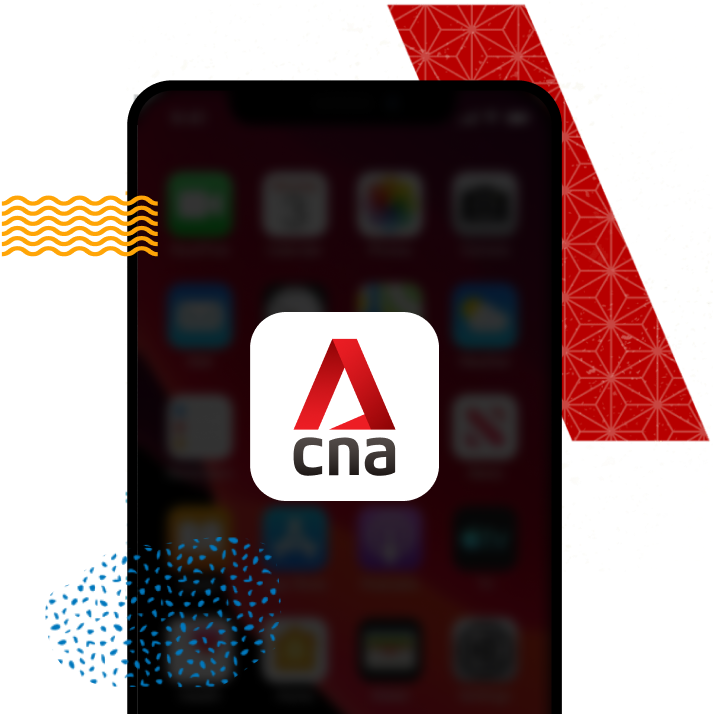'If you hear a sound, just dig': Metal-hunting hobbyists in Malaysia making money off their pickings
A small but growing community of hobbyists in Malaysia are using metal detectors to hunt for gold jewellery and valuable trinkets, with some earning up to tens of thousands of ringgit a month from selling these items. CNA’s Aqil Haziq Mahmud tried his hand at digging up lost treasures.
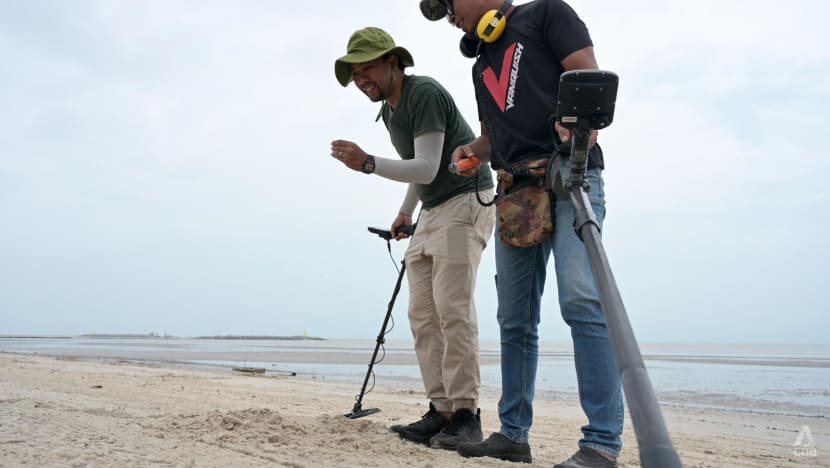
CNA correspondent Aqil Haziq Mahmud (left) checking out a Malaysian coin that was just dug out from the sand at Morib Beach in Selangor. (Photo: CNA/Fadza Ishak)

This audio is generated by an AI tool.
BANTING, Selangor: On a cloudy weekday afternoon, a slightly over one-hour drive from the bustle of Kuala Lumpur, Morib Beach on Selangor’s west coast is a picture of relative calm and quiet.
Aside from the gentle swish of the sea, the only noise seemed to be the high-pitched beeps coming from a metal detector in my right arm. I stopped in my tracks, the shovel in my other hand clumsily scraping against the sand.
I vigorously swung the detector across a smaller area on the sand, eager to narrow down my target location. The sounds grew more distinct, but still echoey.
“There could be something there,” seasoned metal hunter Heidizaini Jurami yelled from about 2m away, his own detector plugged into a headset he wore to hear the beeps more clearly. The higher the pitch of the beeps, the closer a hunter is to scoring something.
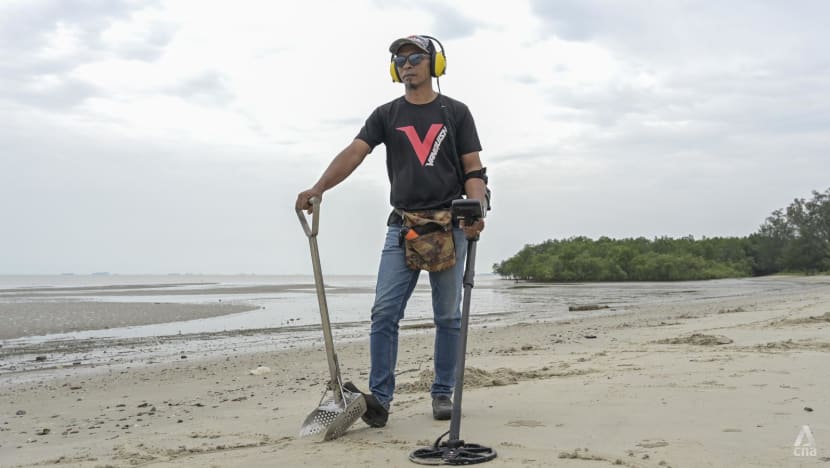
Heidizaini, 47, has been metal hunting for eight years, a hobby practised by a small but growing community in Malaysia. Hobbyists say about 10,000 people in the country own metal detectors for hunting.
The premise is simple: Use a metal detector to find and dig up valuable items that could be sold for a good amount of money.
While the barrier to entry is not exactly low - decent metal detectors cost anywhere between RM1,500 (US$339) and RM10,000 - the rewards could be handsome.
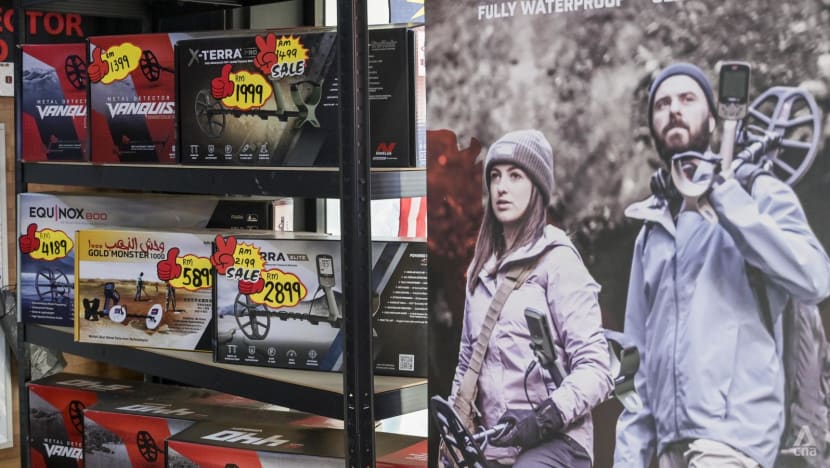
A good haul of gold jewellery, lost at sea from their unfortunate owners and buried under the sand for years, could earn a hunter up to tens of thousands of ringgit in barely a month.
Some hobbyists have quit their jobs to do this full-time, with the proceeds easily replacing their salaries, Heidizaini told me. Others have used the cash to pay for big-ticket items in full, like buying a car or renovating their home.
In recent weeks, gold prices breached the US$3,160 per ounce mark to reach all-time highs. This came amid uncertainty that the sweeping US tariffs would stoke inflation and hinder economic growth.
Gold is traditionally viewed as a safe-haven investment during times of inflation or economic volatility, and its record prices was something Heidizaini was eager to stress.
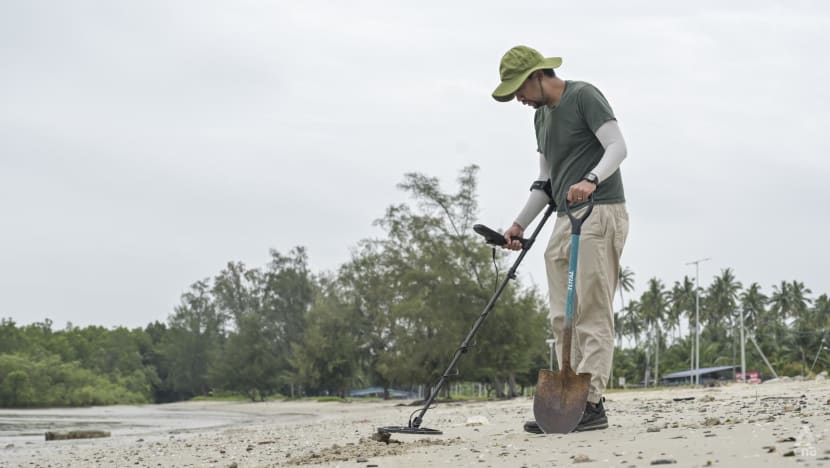
For this report, Heidizaini kindly allowed me to use one of his detectors to try metal hunting. I was under no impression that I would strike gold on my first try, but I was still full of anticipation.
After all, Heidizaini had some sound advice for me when I chatted with him a day earlier: “If you hear a sound, just dig. You can’t be choosy.”
And so I dug. I stuck the shovel into the sand and stepped on the blade, pressing it further into the ground. Then I flicked up a small mound of sand.
It felt awkward doing this with my non-master left hand, and judging from Heidizaini’s reaction after coming around to check on me, I knew I looked like a proper amateur.
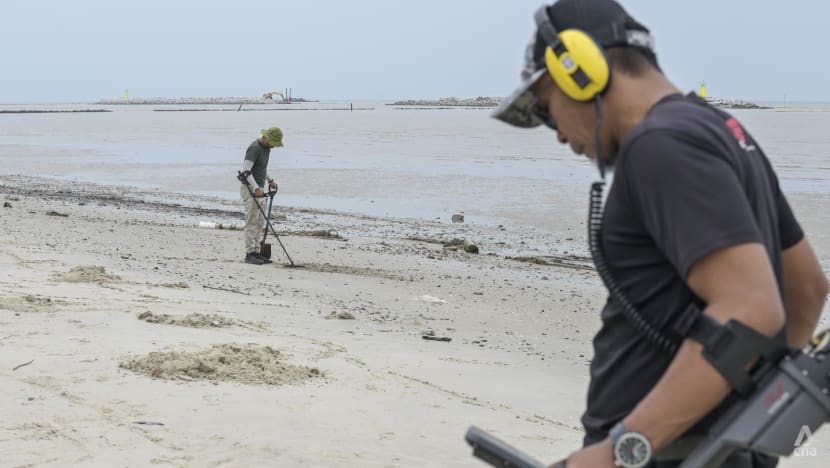
I swung the metal detector over the pile of sand I had just dug out. The beeps did not grow squeakier - a sign to keep digging. After about a minute more of furious shovelling, the beeps stayed the same, with no sign of any metal in the little mess I had created on the beach.
“That was probably just scrap metal deep in the sand,” Heidizaini said almost dismissively, before pointing to a small screen on the metal detector.
I needed to listen closer for more solid sounds, he said, and ensure the blob that appears on a graph in the screen - depicting the metal in the ground - is not fragmented and stayed nicely on an axis. These signs indicate that the metal in the ground is likely to be more whole and could thus be valuable.
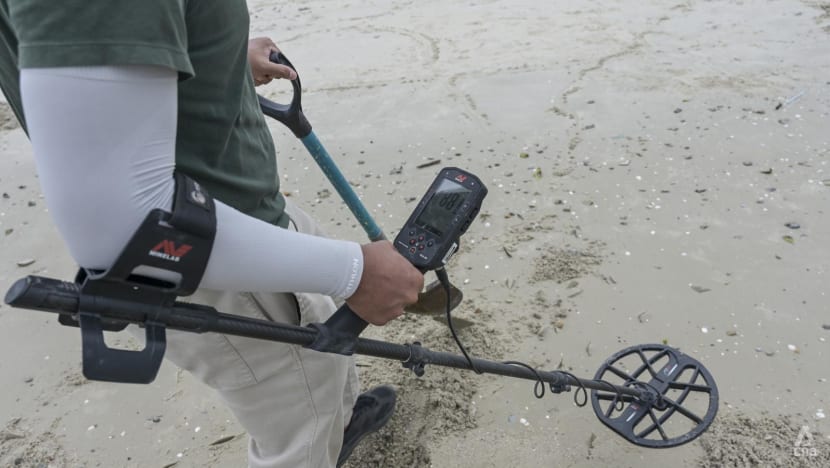
Whatever happened to “just dig”? It had been less than 15 minutes, and I quickly found out that metal hunting was going to be far from a walk in the park.
After one or two more fruitless tries, Heidizaini sensed my disappointment and started calling me over whenever he was confident he had detected something in the ground. Then he let me do the rest.
The first few digs yielded Malaysian coins currently in circulation. They were nothing special, but at least I felt better pinpointing them in the sand and digging them out by myself.
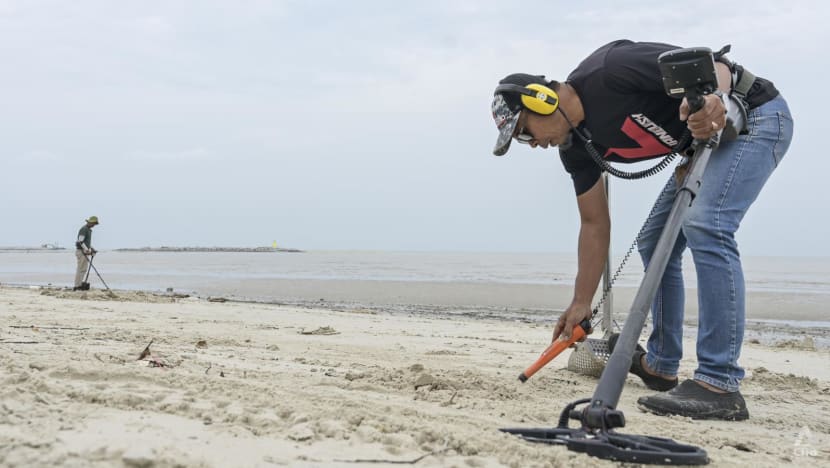
Heidizaini’s final referral was - to me, at least - more significant. After scooping up several mounds of sand and determining there was metal in there, I used my foot to carefully sift through.
Despite the excited beeping of my detector, I still could not find the item. Heidizaini pulled out another tool: A pen-shaped object that acted as a mini-detector, used to more finely probe the dug-up sand.
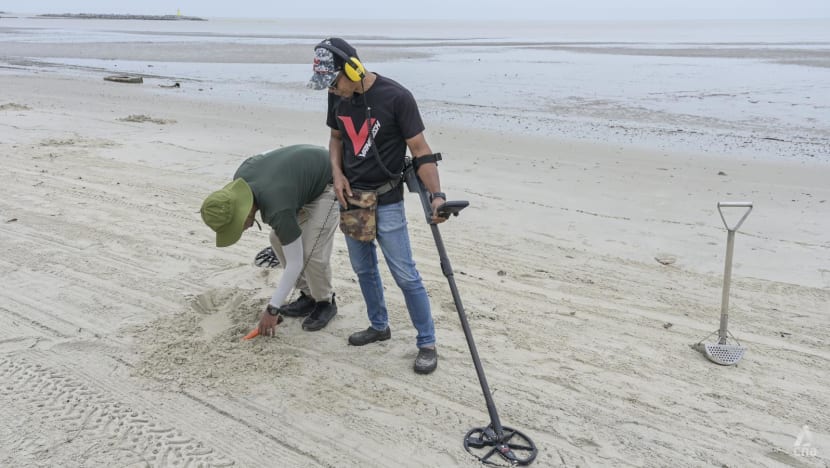
The tool chirped and vibrated heavily at one spot. Heidizaini spotted a faint glint and yanked out a coin. It was tinier and more badly faded than the rest we had found. Years of experience shining through, he immediately quipped: “That looks like a Singapore coin.”
I had to pull the coin closer to my eyes before seeing the familiar Singapore coat of arms, the engraving badly worn off. Indeed, it was a 1 Singapore cent coin, which the country stopped issuing in 2002 due to a lack of usage.
“That’s why we hunters don’t want to go to Singapore. Because we can already find Singapore money here,” Heidizaini joked. As a Singaporean, I smiled to myself. It was a pretty cool find.
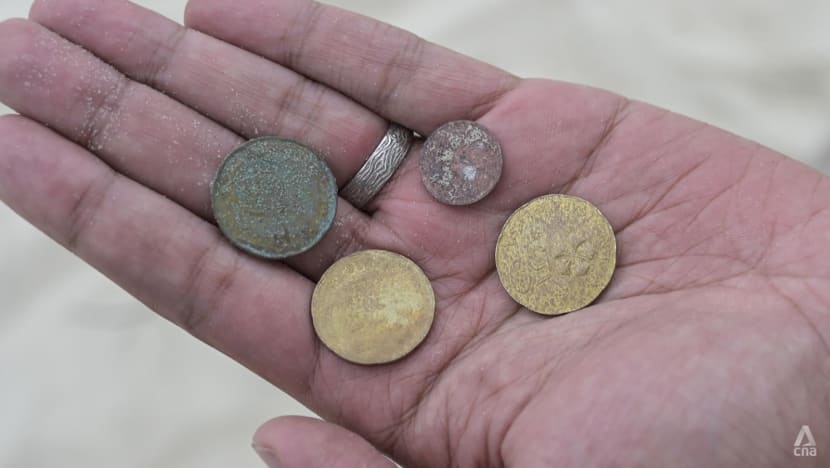
FROM FAILED CONTRACTOR TO DEALING DETECTORS
Heidizaini’s backstory is one that did not begin with a lot of money.
In 2017, the home renovation contractor had shut down his failing business and, together with his wife, decided to sell food at roadside stalls to get by.
As Heidizaini wondered how long he would be stuck with this financial uncertainty, his wife - interest piqued by YouTube videos of metal detecting hobbyists abroad - pleaded with him to give hunting a try.
The pair did their research and decided to go all in. They bought their first metal detector, and with their then 10-year-old son spent four months straight living at beaches across Malaysia.
“We had no money,” Heidizaini said, recounting that they went metal hunting almost every day. “We slept in our car and showered in public toilets.”
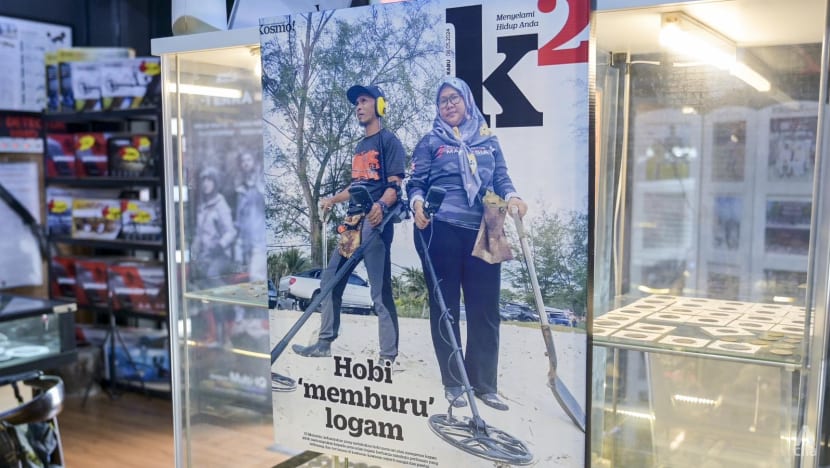
In those few months, Heidizaini and his wife discovered they had a knack for the hobby, managing to find gold jewellery not too long after starting out. They also found that they could make a four-figure monthly income just from selling their pickings.
“That is when I thought that this could be something viable in the long-term,” Heidizaini said, admitting that his views changed after initially being reluctant to try the hobby.
Within a year, spurred by encouraging returns, Heidizaini invested in a new detector.
The difference in depth capability of a more expensive model could be mere inches, but this could be definitive in finding the most prized items, he said.
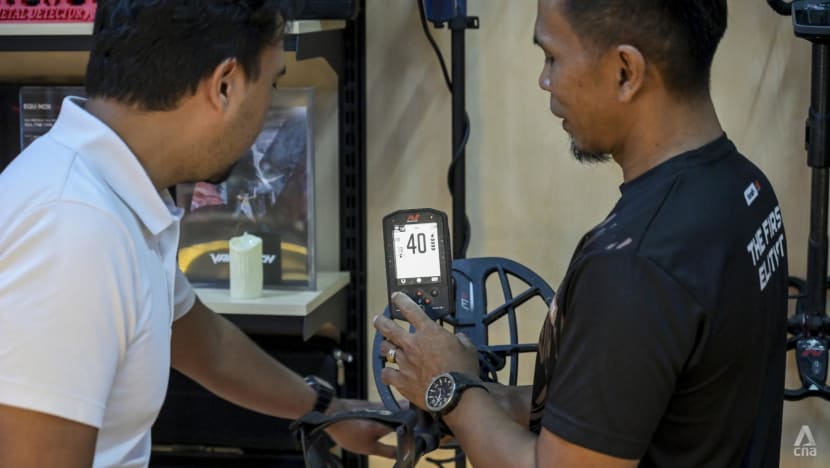
In 2018, with his new detector in tow, he dug up 10 gold rings in a single night at a beach in Desaru, Johor. The coastal resort town is known for its pristine beaches and is popular with holiday goers.
In a good month, Heidizaini said he was able to pull in about RM40,000.
Gold jewellery could be found at low tide at beaches across peninsular Malaysia, especially those known for being swim-friendly, he said.
Popular spots in Selangor include the Morib and Bagan Lalang beaches. Port Dickson is the go-to for Negeri Sembilan hobbyists, while those in Pahang hunt at Teluk Cempedak and Cherating.
If the tide level is not ideal for hunting, hobbyists could turn to places like oil palm plantations on ungazetted land or shallow riverbeds, to find historical trinkets or ornaments that might be valuable to collectors.
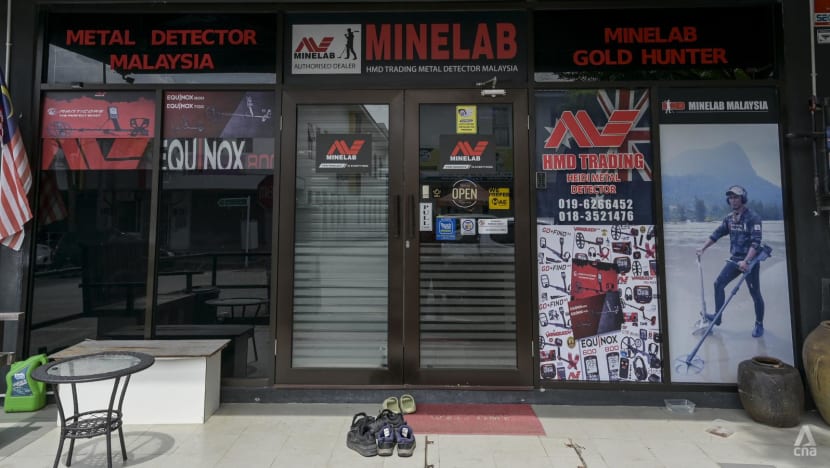
In 2019, Minelab Detectors, the metal detector brand Heidizaini uses, approached him to become an authorised dealer in Malaysia. Heidizaini was sceptical: Would Malaysians be interested in buying them?
He decided to take the plunge anyway. With earnings from metal hunting, he rented his first shop. His decision paid off. Even as the shop was being renovated, demand for the detectors spiked, he said.
By 2021, he was renting three shops. As business kept booming, he decided to buy a shophouse in Shah Alam, Selangor. To fund it, he sold off two showcases worth of gold jewellery he had dug up and intended to keep as investment.
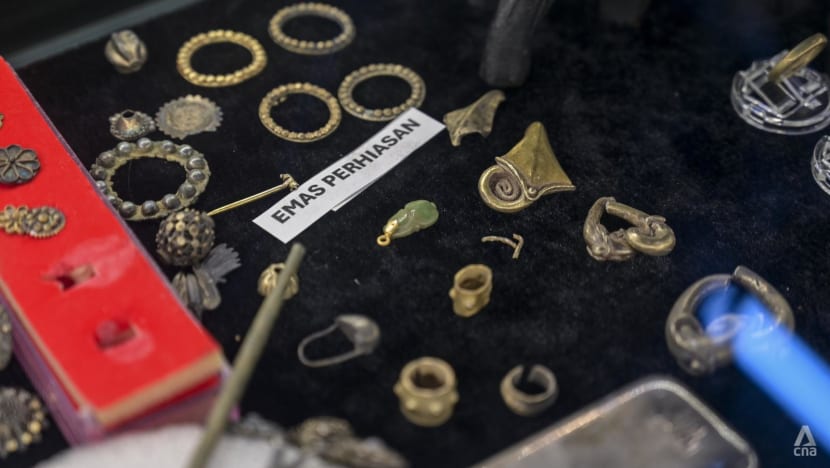
Today, most of Heidizaini’s time is spent on his metal detector business, and maintaining a network of agents in different states who direct purchase requests to him.
“We have our own shop now, so we rarely go hunting,” he told me from his place of business, filled with different models of detectors and display cabinets containing some of his rarer finds, like coins dating back to the 1900s during Malaysia’s colonial period.
“We want to focus on our customers and try to share our knowledge with them, so that they can succeed too.”
THREAT OF STATE SEIZURE
As with many other endeavours, success in metal hunting does not come easy.
“You could be out in the sun or rain, and you might not sleep comfortably if you decide to camp,” Heidizaini warned. “This is not your typical office job.”
Afis Firdaus, who lives in Johor and has been metal hunting for about three years, said the hobby also requires quite a bit of travel, as some of the hunting hotspots might be far from home.
“Sometimes, you dig really deep and what comes out is just tin,” the 33-year-old told me, explaining that gold and tin give similar readings on a metal detector.
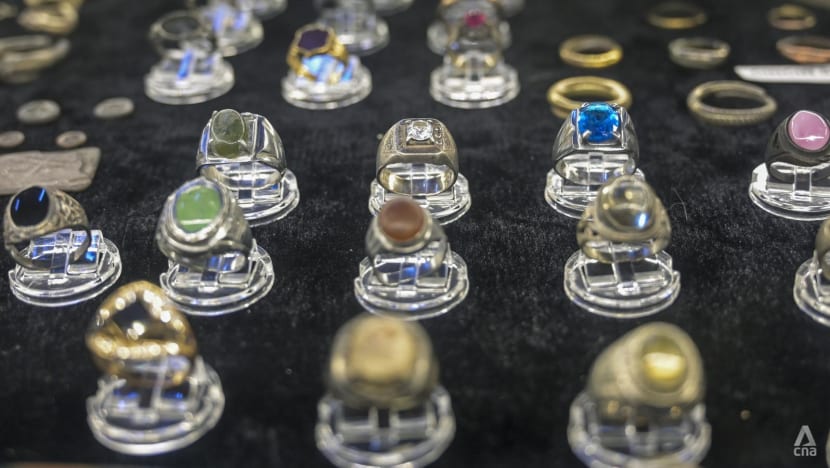
Beyond the physical challenges, there is also the potential of getting on the wrong side of the law.
While hobbyists say the accepted process of selling discovered gold valuables is straightforward - advertise on social media for a year before selling, and donate 20 per cent of proceeds to charity - the lines become greyer when it comes to items with historical value.
These might include old currencies or figurines from Malaysia’s pre-colonial period from the year 1400 to early 1500s, which could fetch from hundreds to tens of thousands of ringgit if sold to collectors.
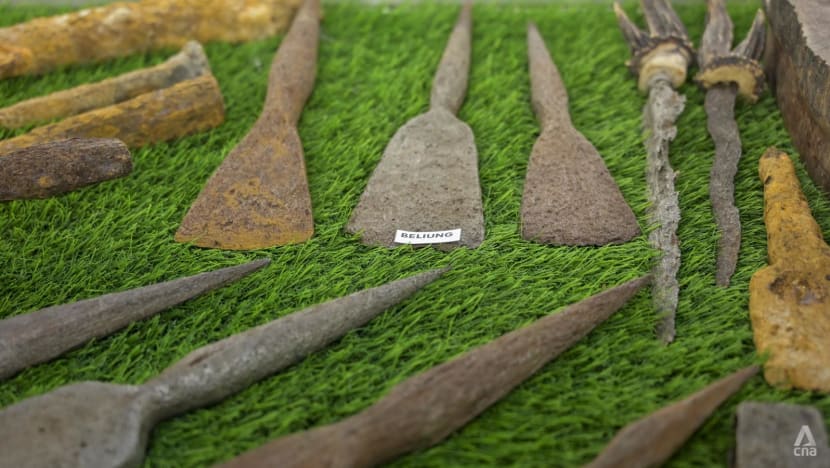
But under the law, the National Heritage Department has the power to seize “any object which is believed to have cultural heritage significance attached to it”, cautioned Sharmaine Yap, a legal researcher from law firm Azmi & Associates KL.
The National Heritage Act also gives the department “discretion” to determine if an object is “sufficiently historical” to be seized, she told me.
“As such, it is advisable for the metal hunters to report or notify the Commissioner (of Heritage) immediately upon discovery of the supposedly historical object, despite the temptation of selling such an object for its significant profit,” Yap said.
CNA understands that the National Heritage Department has in some cases taken action against metal hunters under such provisions, with the community careful not to over-publicise items they find that could fall in the sufficiently historical category.
Afis said his most lucrative sale ever involved “old currency”. When asked to elaborate on the nature of the item, he declined. “I can’t share. If I do, the authority in that state will start monitoring me.”
SOCIAL MEDIA NOVELTY
Still, Afis highlighted that more of his metal hunting income comes from monetising social media videos of his forages than sales of what he has found.
His “Best Finder” page on TikTok has 1.3 million likes and almost 175,000 followers, with clips featuring his quirky finds. Some, like discoveries of old rings or amulets, are embellished with captions and soundtracks that create intrigue.
One of Afis’ favourite things about metal hunting is that it allows him to “generate offline and online income” simply with a metal detector and a phone.
“I’ve dug up a lot of things,” he said, adding that he goes hunting only during the weekend. “Even if I find a bottle cap, I will record and post on social media. I can still earn money.”
Afis said he is waiting to see if he can consistently make US$2,000 a month from his social media videos before deciding if he is willing to quit his day job as a factory worker to pursue hunting full time.
His tips for newbies? Find time to hunt and treat it as a hobby, not as a job. He recalled how a fellow hobbyist who seldom went hunting sold his detector after just a month because he failed to find gold.
“It defies logic that you will be able to find gold if you go just once a month,” said Afis, who is one of Heidizaini’s agents in the latter’s metal detector business.
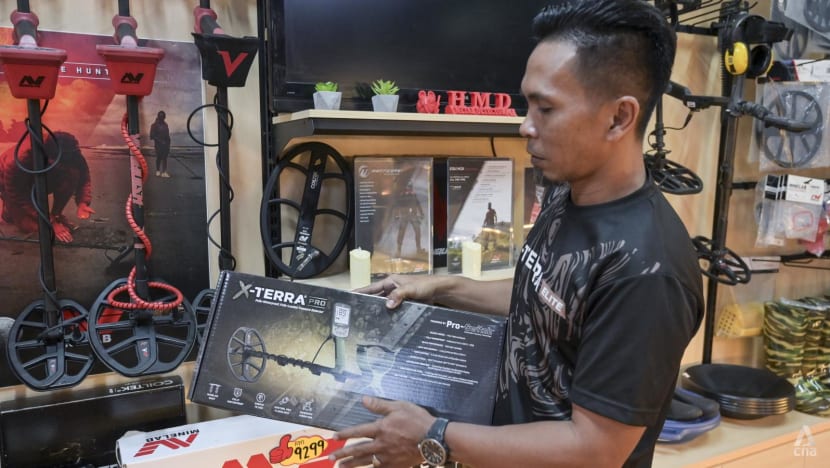
Heidizaini echoed such sentiments, advising beginners to manage their expectations and be “hardworking”.
“Don’t expect to find gold every time you go to the beach, because if you keep failing, you will be easily discouraged,” he said.
While Afis said he has gotten more than 500 online queries about metal hunting, Heidizaini estimated that fewer than 10,000 people in Malaysia own metal detectors, a number he is keen to expand given the country’s 35 million plus population.
His aim is to get more youths interested in it as something that could teach history, keep them active and earn them money. “It’s not something that’s a waste of time,” he said.
ROLLING IN THE SAND
Back at Morib Beach, I certainly did not feel I was wasting my time. Personally, metal hunting felt like a fun activity, especially if done in a group, of digging up lost treasures.
But I’m no Indiana Jones, and I believe it would be really easy to get disheartened if the hours of toil under the hot sun only bore worthless coins.
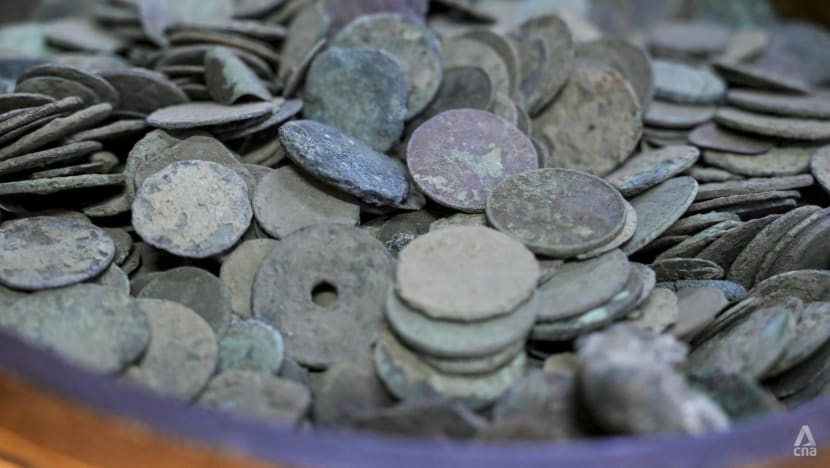
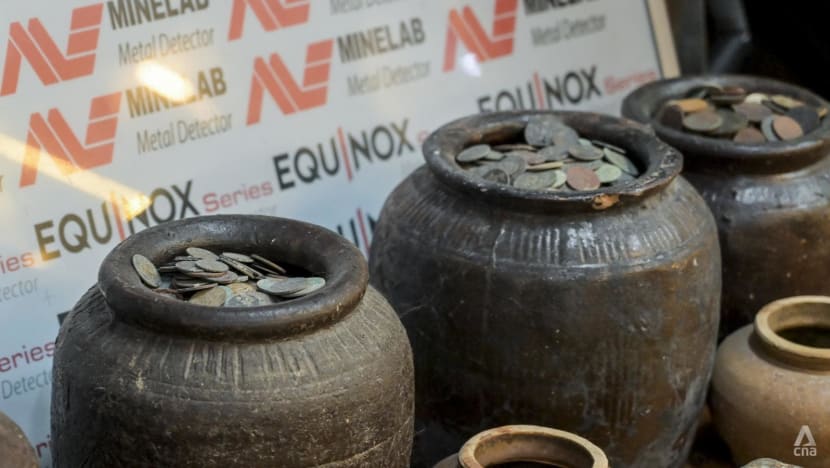
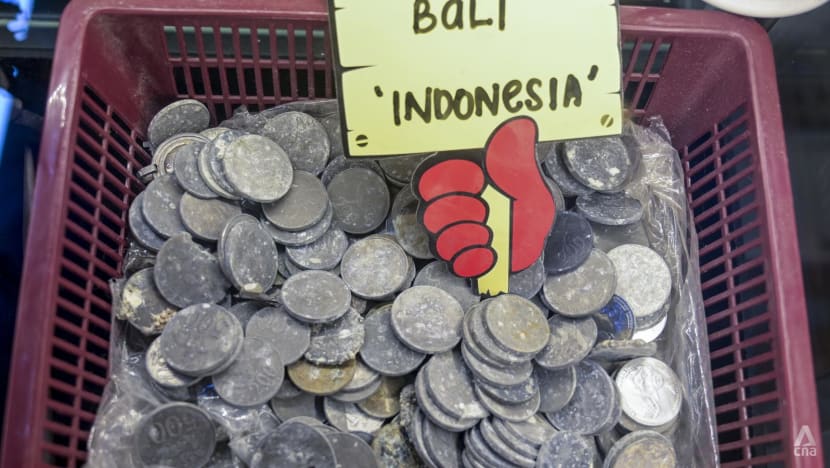
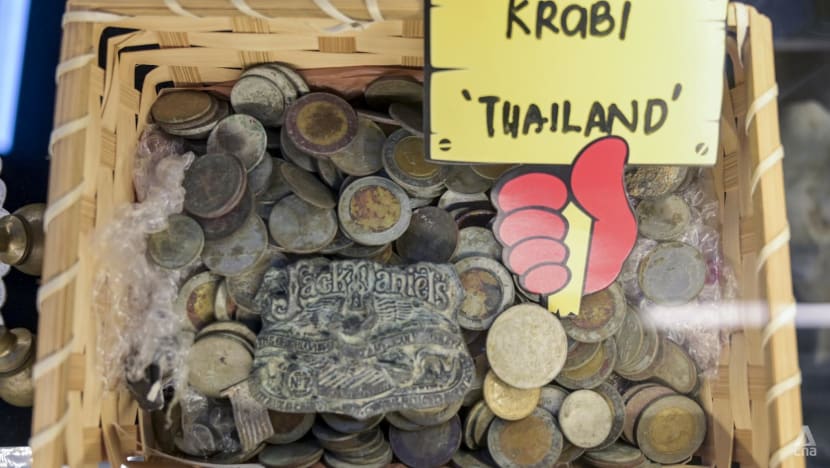
Thirty minutes into the activity, my right arm started to ache from constantly swinging around the metal detector, which needs to hover just above the sand to be most effective. The detector was a lightweight model, but it still took a physical toll on me.
I relayed this pain to Heidizaini. He sneered at me and told his wife, who by then had jumped out of their 4x4 pickup truck to watch us comb the beach. “At the start, it’s normal to feel like that,” she said, reassuring me.
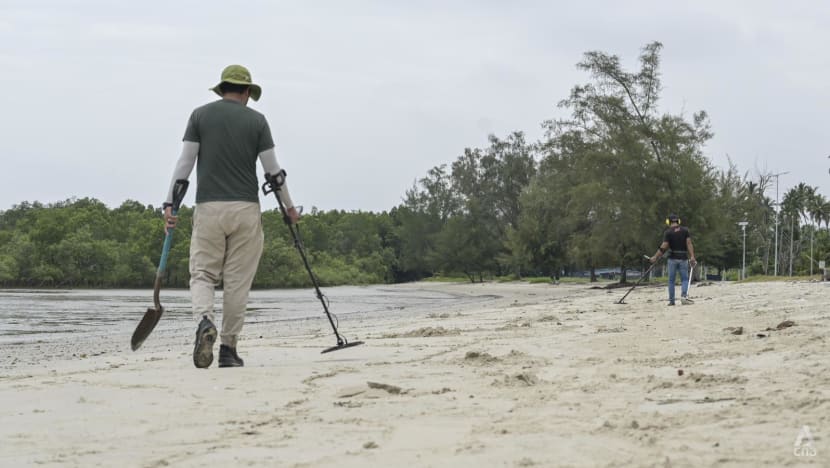
In a real reminder of how this hobby could be worthwhile with enough perseverance, Heidizaini gestured at a breakwater more than 50m past the shoreline. It was near there that he found some gold rings during low tide.
The father-of-four also remembers clearly the first time he found gold, in his first month of hunting in 2017.
“I was so happy that I was rolling around in the sand,” he said. Then, he quickly sold the gold for about RM400, because he needed the income.
“Some people have the mentality that we are trying to find treasure, but we are not. We are finding items that people might have dropped or lost,” he added.
“We don’t hope for people to drop their jewellery in the sea. But when it happens, they usually accept that it’s gone and for years it will be buried there. That’s where we can dig up all these things.”











